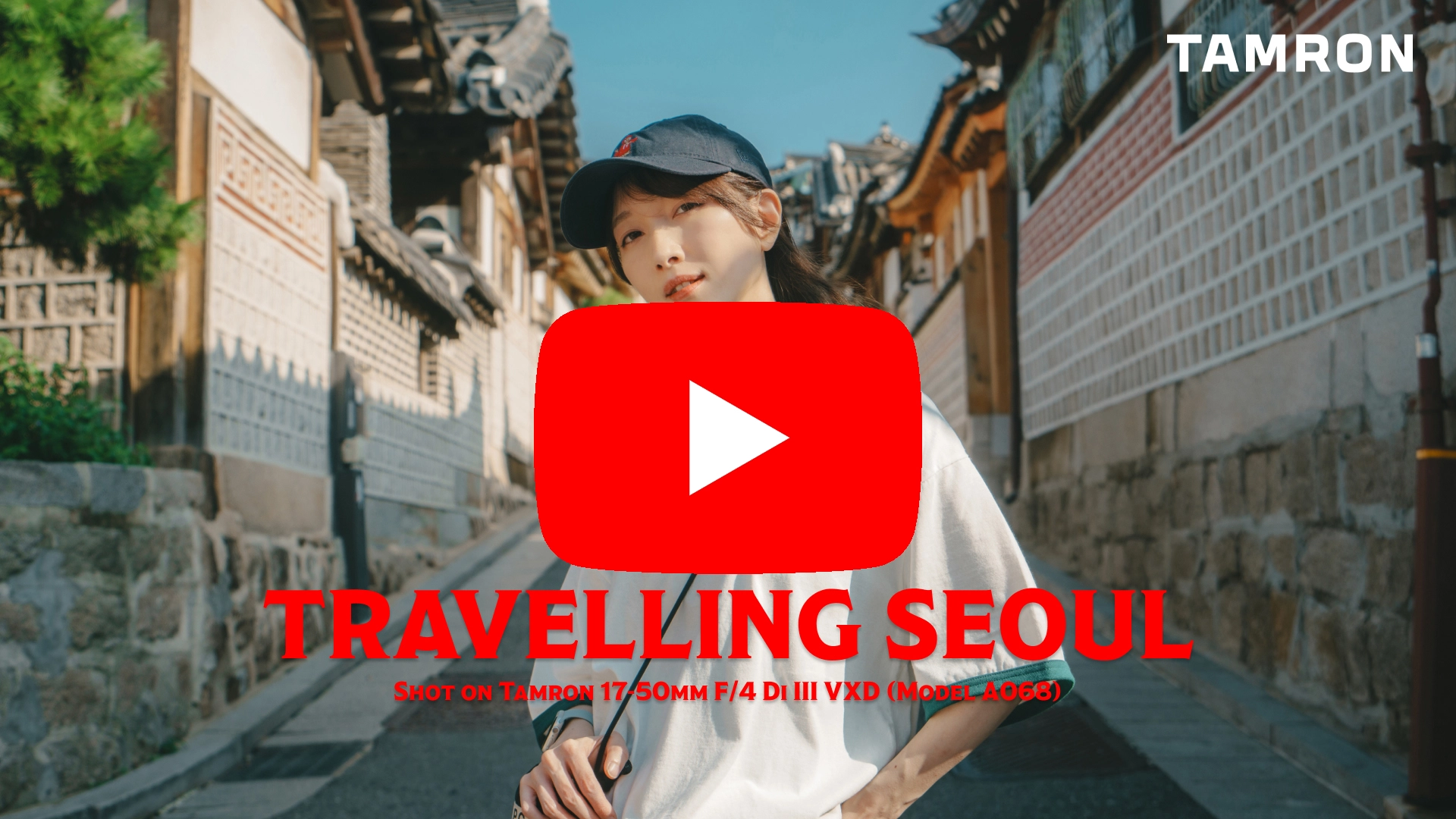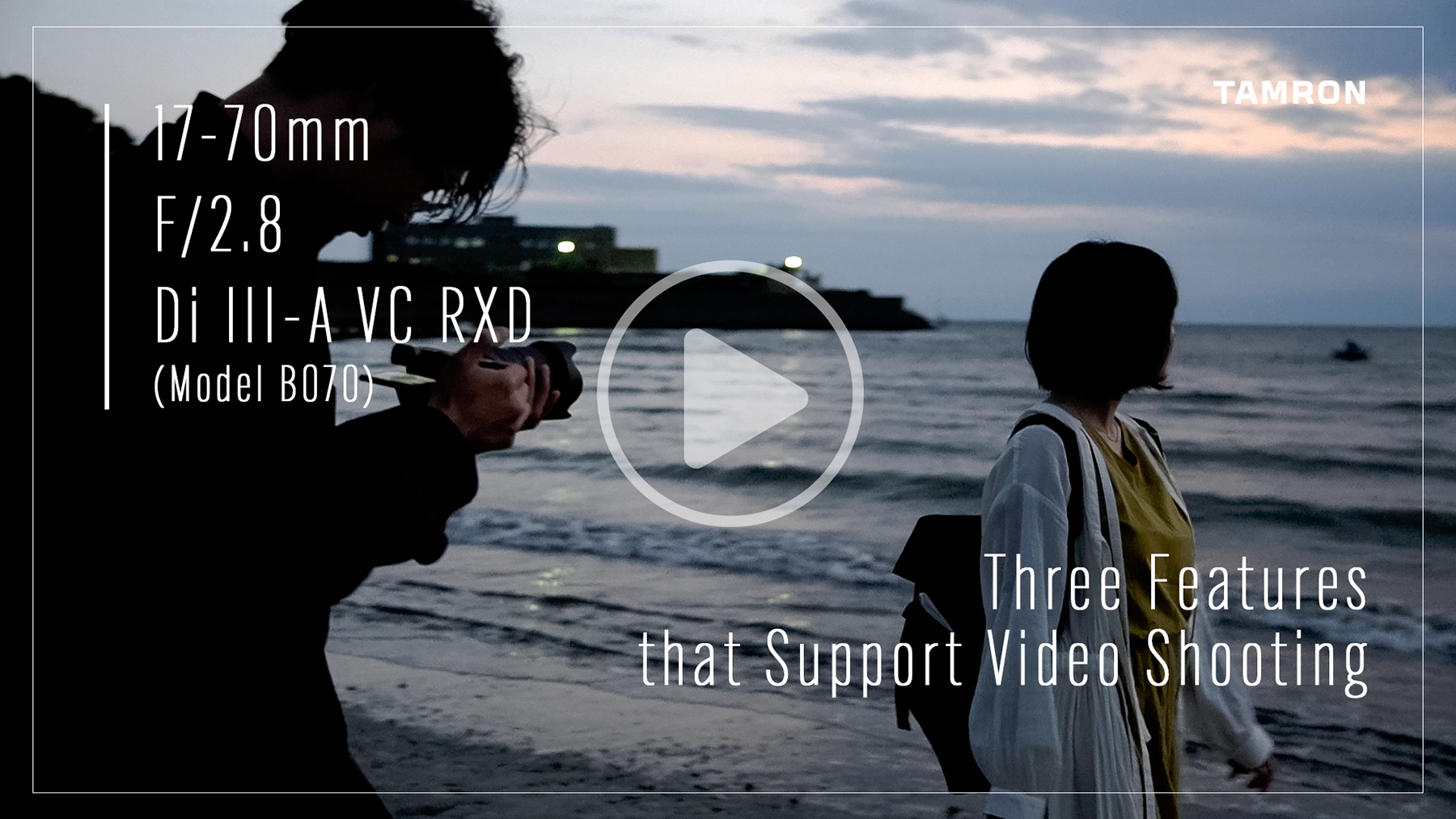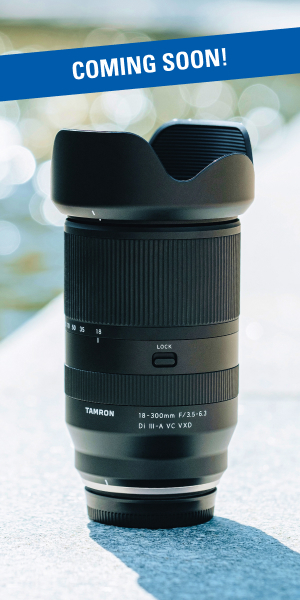Today, anyone can easily create and upload videos using their smartphone, and one of the most popular genres is “vlogging (vlogs).” However, if you shoot vlogs with not just your smartphone but also with a mirrorless camera, you can create a more professional quality video. In this article, we will explain everything from the basics of vlogging to tips on shooting and recommended equipment.
What You’ll Learn In This Article:
- The Basics of Vlogging and Popular Vlog Genres: Understand what vlogging is, why it’s so popular, and explore different vlog types—from daily life to cinematic storytelling.
- How to Get Started with Mirrorless Cameras: Learn what gear you really need, from entry-level setups to advanced equipment, and how to choose based on your vlog style.
- Shooting Techniques for High-Quality Vlogs: Discover simple but effective filming tips to elevate your video quality, including composition, angles, and color consistency.
- Best Practices for Editing and Publishing on Social Media: Get guidance on editing, optimizing for platforms like YouTube, TikTok, and Instagram, and engaging with your audience.
- How to Select the Right Lens for Your Vlogging Style: Learn about lens features like focal length, aperture, autofocus, and image stabilization—and why they matter for vloggers.
What is Vlogging (Vlog)?
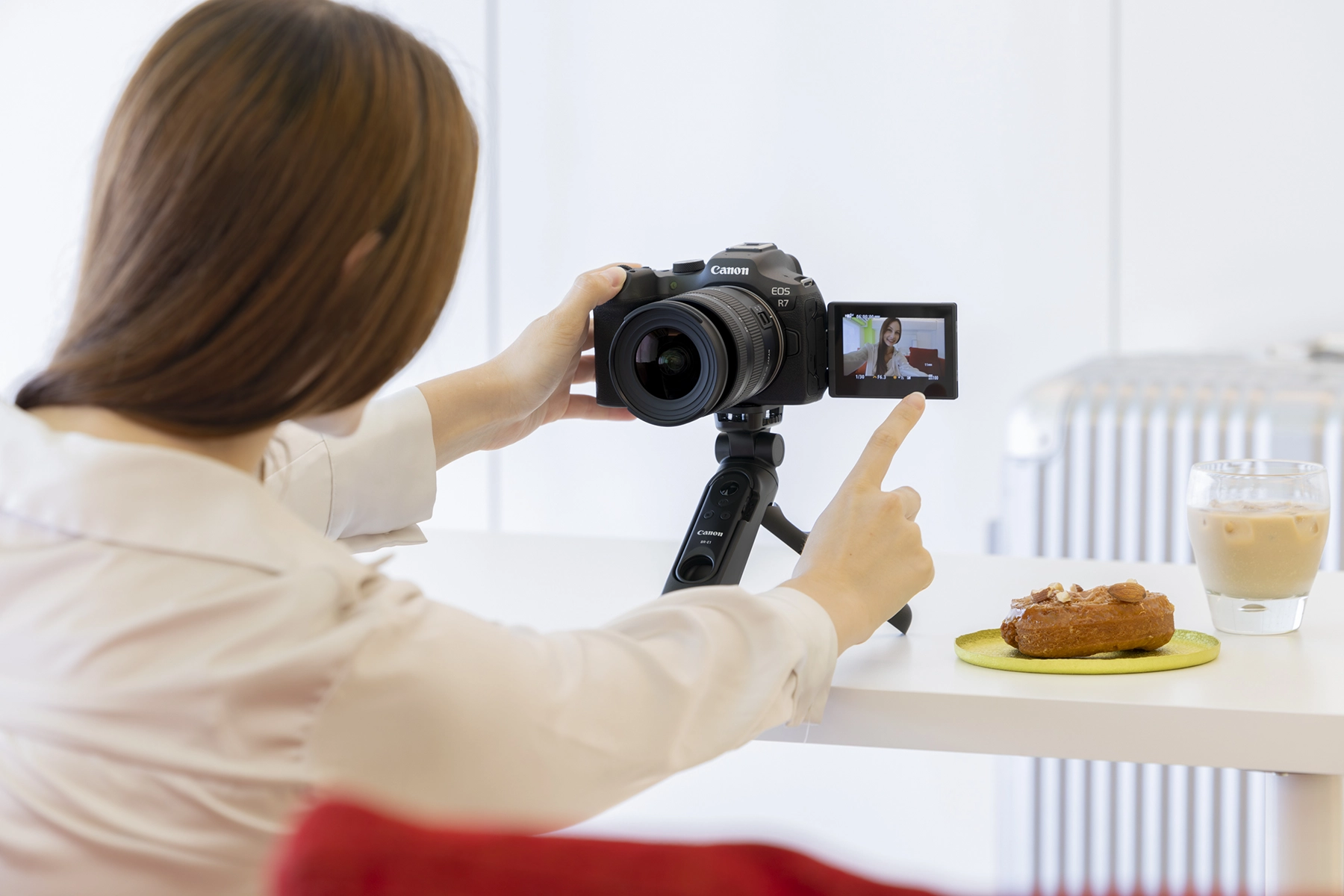
Vlog (vlogging) is an abbreviation of “Video Blog” and refers to content that presents experiences such as an individual’s daily life, hobbies, and travels in video format. Unlike traditional blogs that are centered on text and photos, the greatest appeal of a vlog is that it can convey a sense of realism and emotion more directly to viewers through video and audio.
This type of content is popular because it offers a more personal and empathetic way to communicate, capturing facial expressions, vocal tone, and the surrounding environment—elements that words alone often fail to convey.
It’s common to post on video platforms such as YouTube, Instagram, and TikTok, and one of the reasons for its popularity is that a vlog is easy to create with just a smartphone.
Typical Types and Characteristics of Vlog
There are many different genres of vlogs, and creators express them in a variety of formats. Here we will look at the most common types of vlogs and their respective characteristics.
Daily Vlog
Daily Vlog is a style that introduces a snapshot of your everyday life, such as the flow of your day from getting ready in the morning to going to bed, and how you spend your weekends. Since you can film without any special events or fancy productions, it is a genre that makes it easy for beginners to create content on an ongoing basis.
By stitching together a snapshot of your daily life, such as your morning routine, work, shopping, or cooking, it is easier to feel closer to the photographer’s life. It is a genre in which your personality and lifestyle are the appeal, and being natural is the key to closing the gap with your viewers.
Travel Vlog
Travel vlog are content that allows you to virtually experience travel by recording experiences, tourist spots, meals, and more at your travel destination and conveying the charm of your trip. The appeal is that you can share a sense of realism that cannot be conveyed in guidebooks or TV programs, such as the scenery you see while traveling and discoveries you make on the spot. Travel vlogs also serve as meaningful personal keepsakes, allowing you to relive your journeys and cherish the memories each time you watch them.
Cooking Vlog
Cooking vlogs are videos that introduce how to cook a dish or eat at a restaurant. They can convey the appeal of food not only through sight but also through sound. They are characterized by the fact that they allow viewers to share the entire experience of “food,” such as the sound of cutting ingredients with a knife, the sound of cooking ingredients, and the facial expressions when
eating.
In particular, ASMR (Autonomous Sensory Meridian Response) videos that emphasize cooking sounds and chewing sounds are popular. In addition, rare content such as scenes of dining at high-end restaurants can provide viewers with a simulated experience, just like travel vlogs, and will likely increase engagement.
Family Vlog
Family vlogs are popular heartwarming videos that record a family’s daily life, events, and children’s growth. They also function as a digital album for sharing the family’s growth, including tips and tricks for raising children and taking family trips.
This genre is likely to resonate with viewers at the same life stage as the vlogger, and it also serves as a place to share ideas for childcare and family events. It can give you new insights, for example, “Oh, I didn’t know there were ways to play like this,” or “Children of this age react like this.”
Cinematic Vlog
Cinematic vlogs are highly artistic, using beautiful cinematic visual expressions and editing techniques, and their greatest appeal is their stylish and cool visual beauty. They make full use of shooting techniques and equipment such as slow motion, time lapse, and drone shooting to make even an ordinary everyday scene look like a scene from a movie. Cinematic vloggers pay close attention to editing, such as color correction, color grading, and the use of music. and can be said to be vlog that emphasize the production as a “work of art” rather than just a record. They can express their creativity through visual expressions that draw viewers in and a unique worldview.
How to Start Vlogging with a Mirrorless Camera: Recommended Equipment
The appeal of vlogging is that you can start easily without any special equipment. We recommend that you start by shooting casually with a smartphone or similar device. But here, we will explain some points to keep in mind when shooting more seriously with a mirrorless camera.
The equipment used for vlogging is diverse and complex, but you don’t need to get it all at once. It’s a good idea to start with a basic camera and microphone and gradually add more equipment according to your style and needs.
For example, if you’re making a cooking vlog, you should prioritize a tripod that allows for stationary shooting. And if you’re making a travel vlog, you should prioritize a lightweight camera that’s easy to carry.
Camera
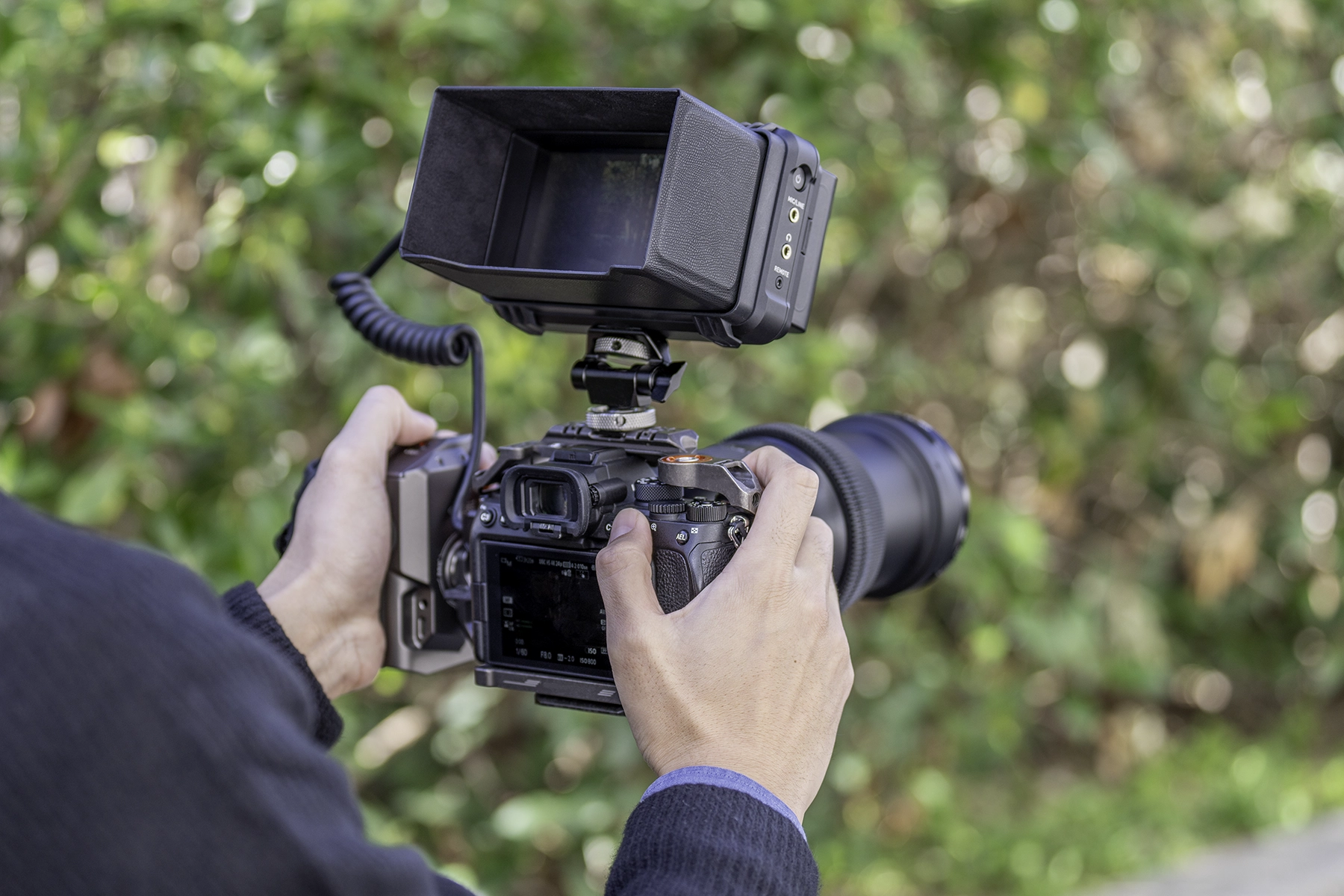
There are three main cameras that are often used for vlogs.
- Smartphone: The most convenient is probably a smartphone. The latest models can shoot with sufficient image quality, and editing can be done easily with a dedicated app. Since you can start with what you already have, it is also ideal for those who want to keep their initial investment low.
- Mirrorless Camera: For more serious shooting, mirrorless cameras are often used. You can be particular about the lens and shooting equipment, and you can create high-quality cinematic vlogs. You’ll be able to capture and express things that are challenging to achieve with a smartphone, such as videos featuring background blur and low-light or nighttime scenes.
- Action Camera: Finally, action cameras are also popular. Small and lightweight cameras such as GoPro are ideal for outdoor and intense vlog and are popular for their high durability. Many models are waterproof, making them useful in environments where it is difficult to shoot with a normal camera, such as rainy days and during marine sports.
Microphone
Something beginners often overlook is the quality of the audio. Viewers are more sensitive to poor sound quality than image quality.
An external microphone is effective in improving audio quality. Simply using an external microphone can significantly improve sound quality and make the video easier to watch. If you are more particular, you can use a lapel microphone, but it is best to start with a model that you can easily purchase. Also, directional microphones preferentially pick up sounds from a specific direction, reducing ambient noise and producing clearer audio.
Lens
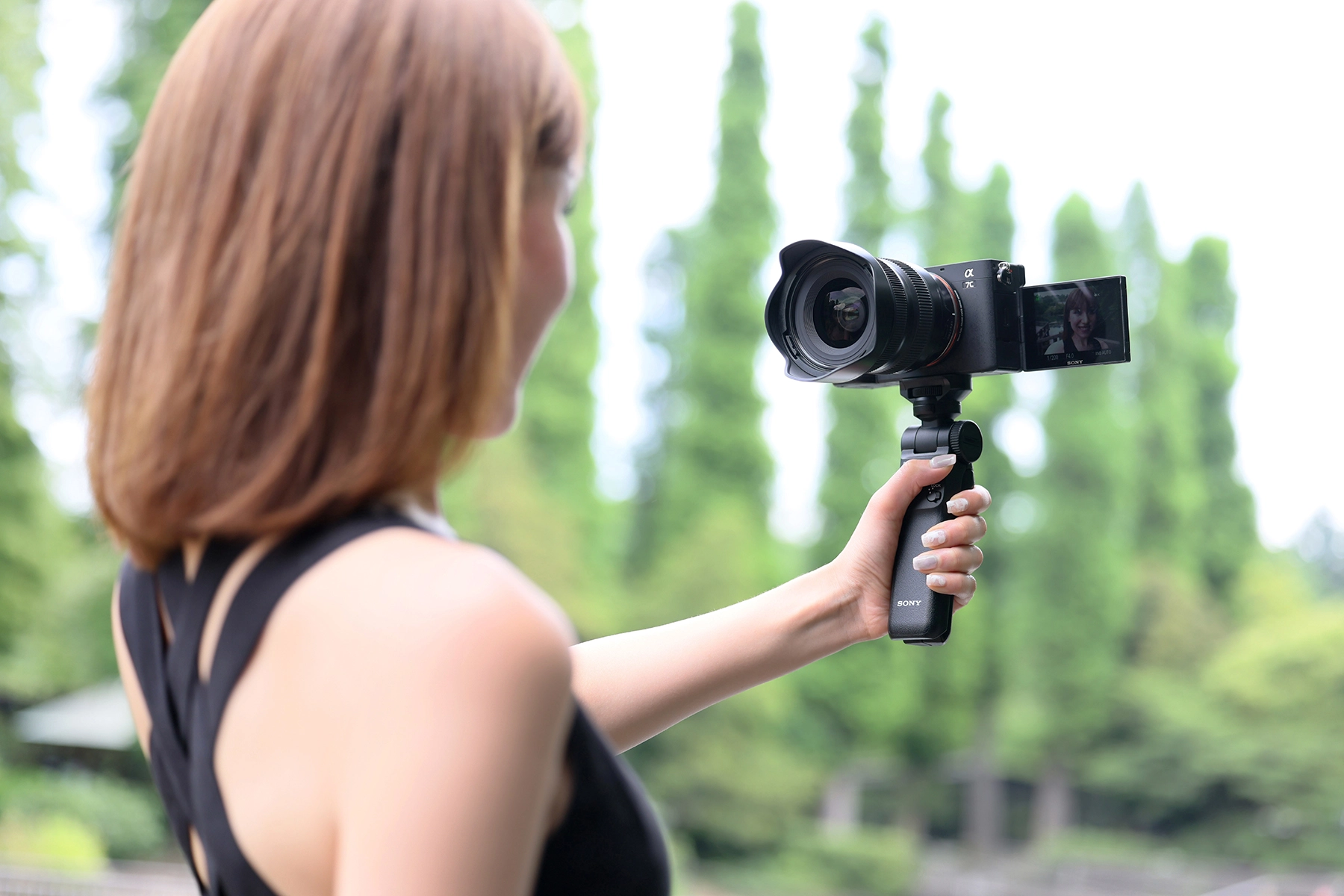
When using a mirrorless camera, be sure to choose a lens that suits your purpose and the video you want to shoot.
Wide-angle Lens
First, a wide-angle lens (approximately 35mm or less) is suitable for selfies and indoor shooting because it can capture a wide range even in a small space. It is also ideal for capturing your face and the background at the same time, or for shooting vast landscapes at your travel destination.
Standard Lens
Next, a standard lens (approximately 50mm or less) features a natural angle of view close to that of the human eye and is highly versatile and can be used in a variety of scenes. In particular, it is suitable for shooting everyday landscapes and people with a natural impression.
All-In-One Lens
If you want to reduce your luggage on a trip, a lightweight and compact all-in-one zoom lens is also convenient. It covers a wide range from wide angle to telephoto, so you can avoid the hassle of changing lenses and can handle a variety of scenes. In addition, if you choose a lens with a small maximum F-number, not only can you take brighter images even in dark rooms or at night, but you can also create beautiful images like a movie by taking advantage of the background blur.
Tripod or Gimbal
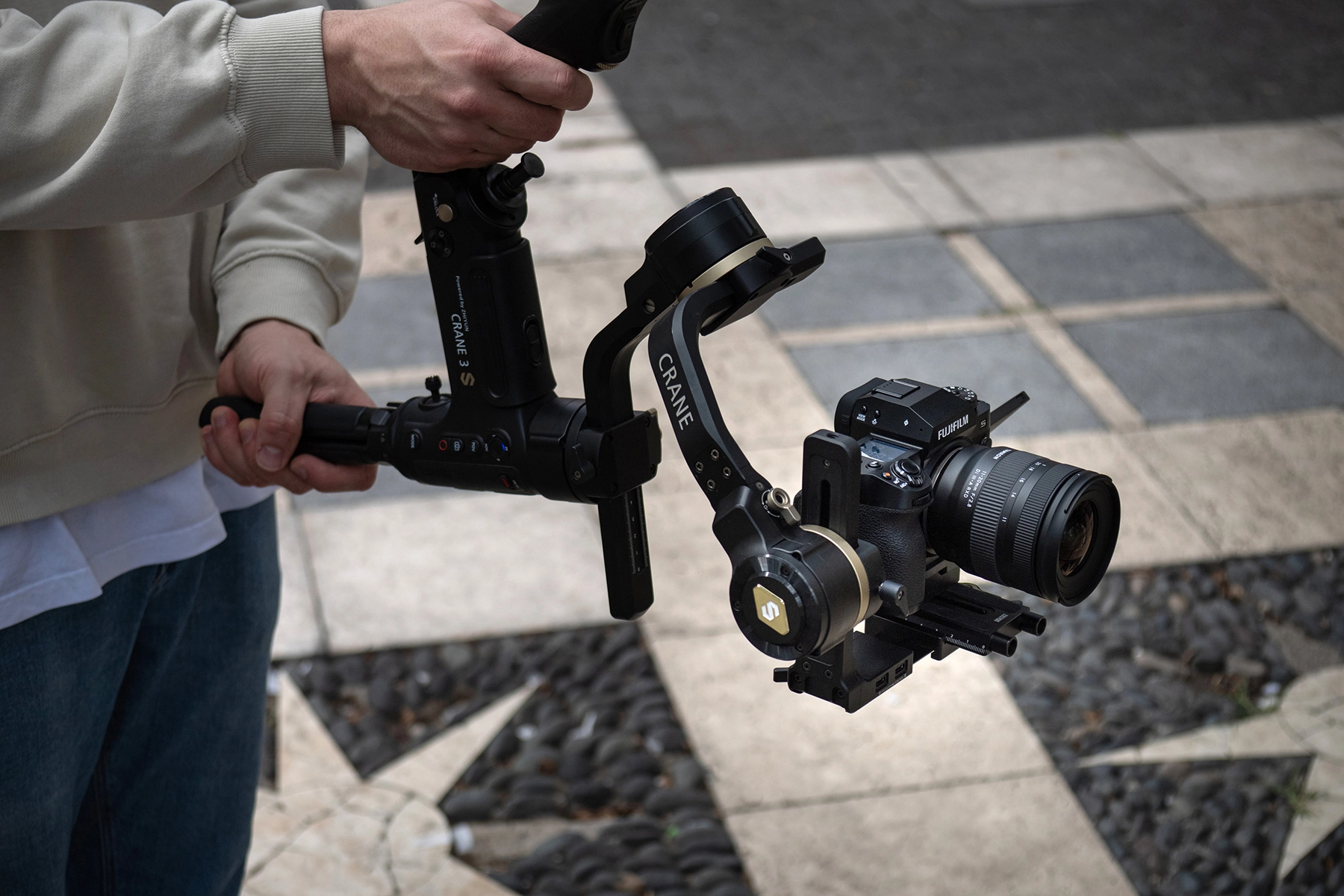
For stable shooting, check out the accessories. A tripod is an essential item for selfies and fixed shooting. For smartphones, it is especially useful to have a lightweight and easy-to-carry mini tripod or a type that can be used as a grip. It can be used in a wide range of ways, such as placing it on a table to film yourself or take pictures of the scenery.
A gimbal reduces camera shake when shooting while walking or moving, allowing you to take smooth footage like a professional. It’s especially useful for travel vlogs and daily vlogs, where you often shoot while moving.
Lighting
If you are shooting a professional video, you can improve the quality by making use of lighting. For example, small LED lights are useful for shooting in dark places. There are various types, such as those that can be attached directly to the camera and those that can be placed on a stand, and they are useful for shooting indoors at night or in places where there is insufficient light.
Ring lights illuminate the face evenly, making it ideal for making the expression look brighter in selfies. It is especially effective when you want to clearly show the details of your face, such as beauty vlogs. It also gives the eyes a “catch light” that gives a natural glow, making the expression look lively.
It is also important to make good use of natural light. Shooting near a window illuminates the subject beautifully with soft light, creating a warm and emotional atmosphere.
Start Small and Stay Consistent: Build Confidence Through Practice
While selecting the right equipment matters, the most crucial step is simply to keep creating videos. Begin with a short, one-minute video to experience the full process—from shooting and editing to publishing. Starting with a subject you’re passionate about or skilled in will boost your motivation and make it easier to stay consistent. When you’re knowledgeable about your topic, you’ll speak with greater confidence and find more enjoyment in the filming experience.
Tips for Shooting Stylish Vlogs
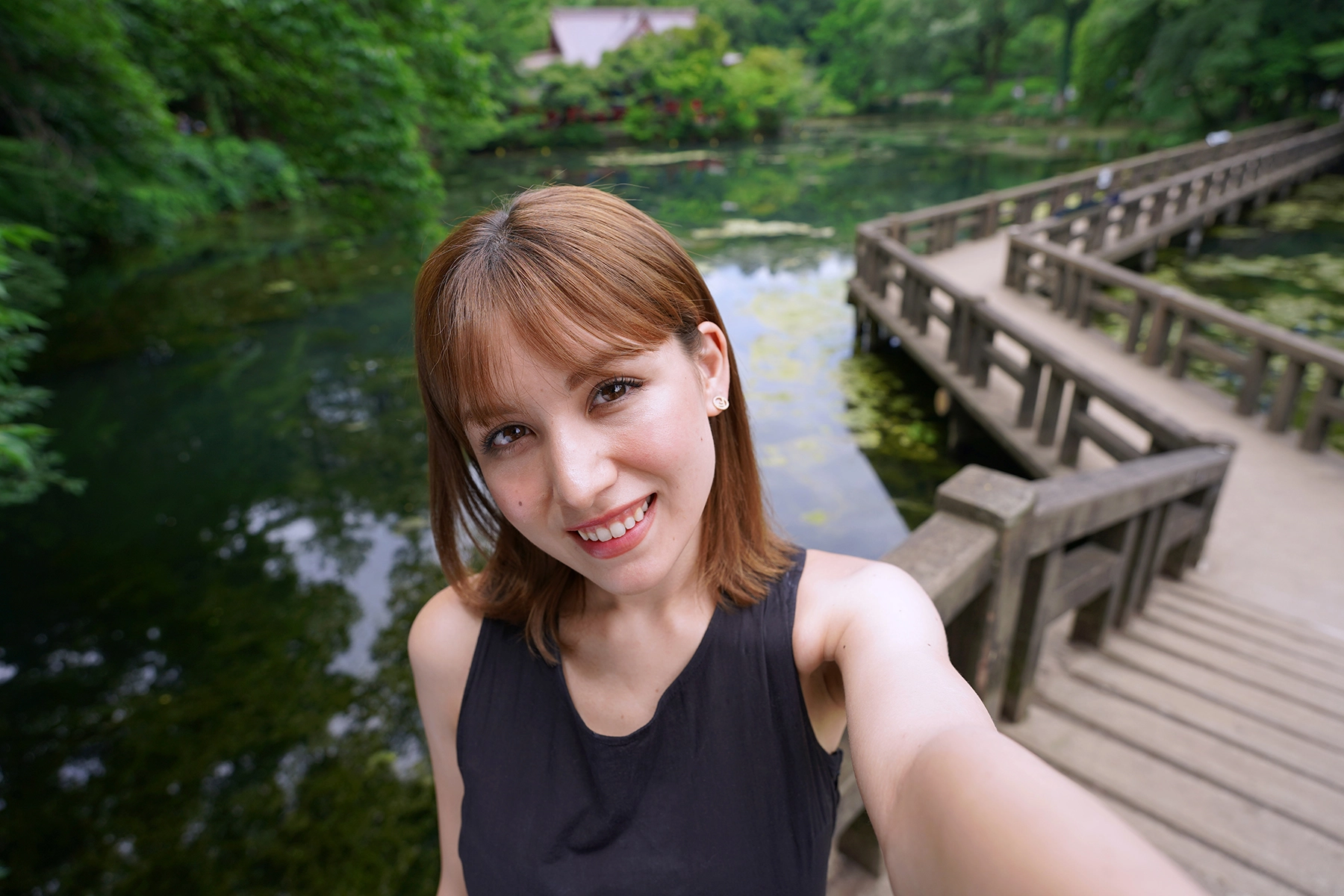
To create a more engaging vlog, mastering a few fundamental filming techniques can make a big difference.
- First, just being aware of typical compositions such as the rule of thirds will make it look better. Instead of placing all the shots in the center of the screen, try consciously changing the composition to create a more vivid impression.
- Second, mix in close-ups (zoom in and out) and shots from different angles to prevent the entire video from becoming monotonous.
- Third, when shooting videos, it is important to have a consistent overall atmosphere. By unifying the color tone of the video, you can more clearly convey the world view you want to express.
- In addition, by using software such as TAMRON Lens Utility™ you can easily take professional-level video footage. You can customize lens settings and smoothly operate the focus, so even beginners can easily create professional-looking videos.
Editing Vlogs
Editing is the process of stitching together filmed video and audio to create a finished video. By cutting out unnecessary parts and adding music and subtitles, you can make the content easier for viewers to watch and understand. Editing creates a story, greatly improving the impression and communication power of the video. Even beginners can create compelling videos by learning the basics.
Publishing Your Vlog on Social Media
If you plan to share your vlog publicly, consider uploading your finished video to platforms like YouTube, Instagram, or TikTok. Before posting, it’s essential to understand the unique characteristics of each platform and tailor your content accordingly. For instance, YouTube supports longer videos and can generate engagement with in-depth content, while TikTok and Instagram Reels favor shorter clips—typically around 15 to 60 seconds.
To help viewers discover your video, pay close attention to elements like the title, thumbnail, description, and hashtags. Do some research online to gather tips and best practices for optimizing these components.
If you’re serious about growing your presence, try to engage with your audience by reading and responding to comments. Viewer feedback can guide improvements in your future videos, and responding to requests helps build a stronger, more connected community.
Things to Keep in Mind When Shooting and Publishing a Vlog
There are a few things to keep in mind to keep your vlogging fun. It is important to be well-mannered and considerate in order to prevent problems and continue your creative activities with peace of mind.
Respect Privacy
When filming family and friends, be sure to get permission in advance, and if they don’t want their faces to be shown, use blurring and angle to avoid showing their faces. It is also important to be extremely careful not to identify your home address. Personal information such as the view from the window, nameplate, or mail may be unintentionally captured in the video. Make it a habit to carefully check the video before posting to make sure it does not contain any risky information.
Be especially careful when filming children. Do not disclose safety-related information such as the name of their school or extracurricular activities. Also, consider the possibility that your child may not want their video to be made public in the future, and think about protecting their privacy from a long-term perspective.
Do Not Infringe on Copyrights
Be mindful of copyright laws by using royalty-free background music and sound effects. Nowadays, there are many services offering free music resources—such as the YouTube Audio Library—which are great tools to take advantage of when creating content.
It is also important to be careful when filming so that copyrighted material such as TV programs, music, or other videos does not appear in the footage. If there is background music playing in a cafe or shop, it is likely that the music is also protected by copyright, so you will need to take measures such as muting the sound or replacing it with other music when editing.
Check for Filming Permission
Even in public spaces, photography restrictions are common. When shooting at commercial locations or tourist attractions, always review the facility’s rules beforehand and secure permission if required.
In addition, even if you are shooting footage for private purposes rather than commercial purposes, some places may require permission or permits depending on the type of photography equipment you use. If you are using professional equipment such as tripods, lighting, or drones, you may need to secure permits in advance.
And, when taking photos and videos overseas, regulations and etiquette vary greatly depending on the country and region. In order to avoid trouble, you should gather information about local laws and culture before traveling.
How to Choose the Right Lenses for Vlogging
Finally, we will explain the points to consider when choosing a lens suitable for vlogging.
Maximum aperture
Lenses with small maximum apertures, such as F2.8 or F4, can capture more light, making it easier to capture brighter images even in dark places.
In addition, lenses with small maximum apertures also feature beautiful background bokeh. The bokeh makes the subject stand out, resulting in images that look more like those taken with an mirrorless camera.
Focal Length and Angle of View
As mentioned above, the angle of view changes depending on the focal length of the lens. Use different lenses depending on the image of the Vlog you want to capture.
For example, wide-angle lenses are suitable for shooting in small rooms, taking pictures of people including the background, and taking pictures of landscapes. Standard lenses provide a natural angle of view and perspective, making them ideal for shooting unadorned everyday scenes. Look for a lens with the angle of view you want by checking out examples in stores and actual shots.
The Character of a Lens: Why It Matters
Even lenses with similar specifications can produce different colors, resolutions, and overall rendering. The visual impression—whether sharp, soft, warm, or cool—is often referred to as the lens’s “look” or “character.” This unique rendering is part of what gives each lens its individuality. Since many of these qualities can only be appreciated through actual use, reviewing sample images is highly recommended. Using lenses from the same manufacturer can also help maintain a consistent look across your work.
Weight and Compactness
By choosing a lightweight and compact lens, you will be less likely to get tired even during long periods of shooting or handheld shooting. Lightweight lenses are especially beneficial when shooting on the move, such as when traveling or walking around town. If you want to reduce your luggage when traveling, an All-in-one zoom lens is also convenient. Since one lens covers everything from wide angle to telephoto, it can be used in a variety of scenes.
Focus Breathing
Focus breathing is a phenomenon in which the angle of view changes slightly when changing focus. It is hard to notice when taking photos, but it can cause discomfort when shooting video. Before purchasing a lens, check reviews and sample footage to see the extent of focus breathing.
Optical axis misalignment and focus shift when zooming
When using a zoom lens for video shooting, you need to be careful of optical axis misalignment and focus shift.
Optical axis misalignment occurs when the optical axis of a zoom lens shifts between the wide-angle and telephoto ends, and it can cause differences in composition. Focus shift is the phenomenon in which the focus position shifts depending on the focal length of a zoom lens. This effect manifests itself as the focus becoming out of focus when zooming in and out, which can be a problem when shooting video.
Along with focus breathing, check out sample images and reviews to understand the extent of optical axis misalignment and focus shift.
Operability of focus ring etc.
When shooting video, there are many situations where smooth focus operation is required. A focus ring with just the right amount of resistance makes it easy to make fine focus adjustments and provides a comfortable feel. It is also a good idea to check how smoothly the focus can be switched between autofocus (AF) and manual focus (MF).
Moisture-Resistant Construction
Vlogs are often shot outdoors and can be subject to unexpected weather changes. Lenses with a Moisture-Resistant Construction allow you to shoot safely even in slightly bad weather. This is especially useful for travel vlogs and outdoor vlogs that feature nature.
Autofocus (AF) Performance
When it comes to AF performance, in addition to whether the subject can be focused on smoothly, check the camera’s ability to track moving subjects. Another point to check is the quietness of the AF motor. When recording with the camera’s built-in microphone, the sound of the AF operation may be picked up by the audio, so a quiet AF is the best option.
Image Stabilization
Choosing a lens with a Vibration Compensation mechanism will enable you to shoot more stable footage. Since tripods and gimbals are often not used for Vlog shooting in particular, it is a good idea to check whether the lens has image stabilization and how effective it is.
Check out these Tamron Mirrorless Lenses for Your Next Vlogging Project
Wide-Angle Lenses
- 11-20mm F/2.8 Di III-A RXD (Model B060) for Canon RF, Fujifilm X and Sony E APS-C
- 17-28mm F/2.8 Di III RXD (Model A046) for Sony E full-frame
- 20-40mm F/2.8 Di III VXD (Model A068) for Sony E full-frame
Standard Lenses
- 17-50mm F/4 Di III VXD (Model A068) for Sony E full-frame
- 17-70mm F/2.8 Di III-A VC RXD (Model B070) for Sony E and Fujifilm X APS-C
- 28-75mm F/2.8 Di III VXD G2 (Model A063) for Sony E and Nikon Z full-frame
All-In-One Lenses
- 18-300mm F/3.5-6.3 Di III-A VC VXD (Model B061) for Sony E and Fujifilm X APS-C
- 28-200mm F/2.8-5.6 Di III RXD (Model A071) for Sony E full-frame
Trying out Full-Scale Vlog Shooting with a Mirrorless Camera
Vlogs are often shot with smartphones, but using a mirrorless camera allows for more freedom in shooting with professional equipment. If you are just starting to get serious about video shooting or want to keep higher quality footage, try shooting your vlogs with a mirrorless camera.
If you are trying vlogging for the first time, try shooting casually first and experience the entire process up to editing.
Learn more about Tamron lenses for vlogging at an authorized Tamron dealer near you or visit the TAMRON Store.

